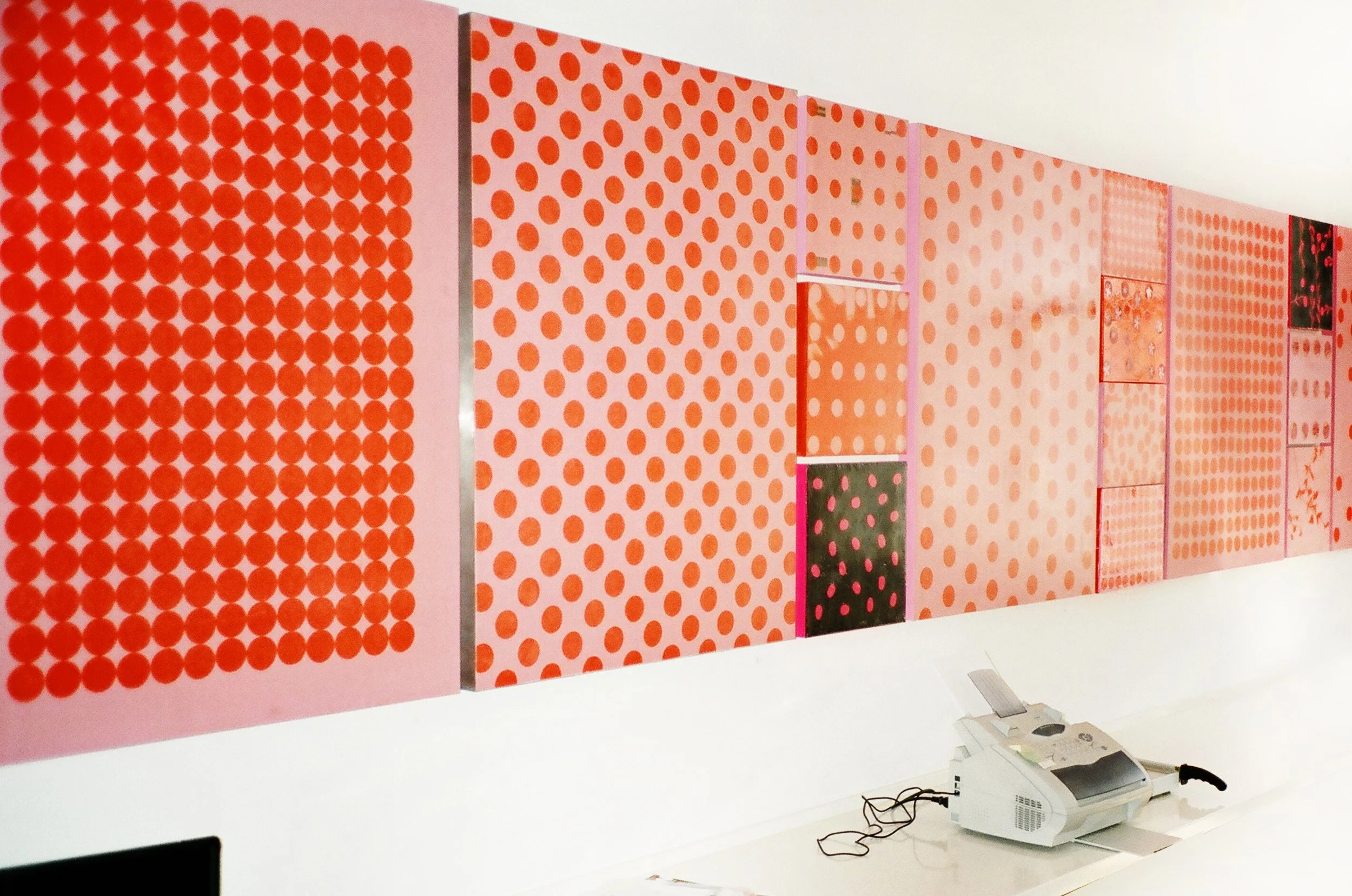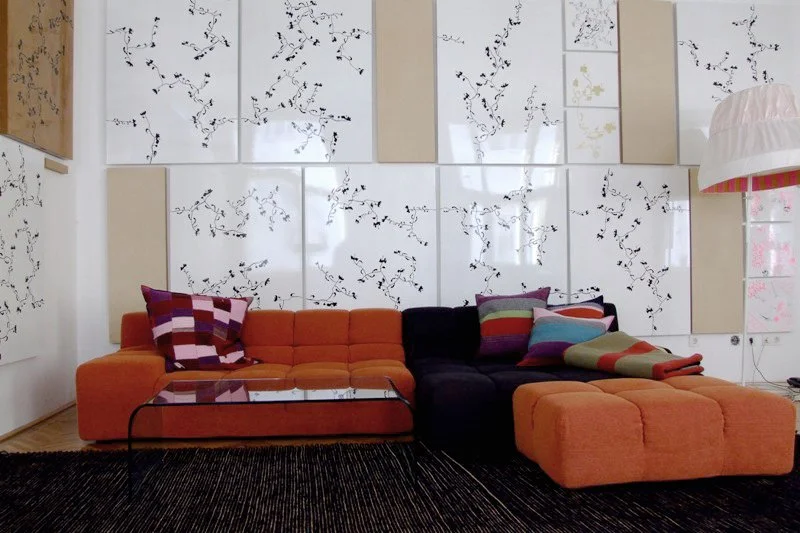How it all started.
The story of how I began creating my moveable wallpapers goes back to 2004. That year, I spent months painting nothing but dots — I had just separated and my kids were 1 and 3 years old. I had a child abduction trial and custody for my kids was on the line. After a year of dots, I started cutting out flowers from magazines and old prints, arranging them into layered, shifting compositions. Those paper flowers became the seeds of movement in my work — alive, playful, never static. Over time, I began translating my hand-drawn illustrations into printed forms, allowing the drawings themselves to become part of the pattern’s dance. That’s how the idea of moveable wallpapers was born — art that could be touched, rearranged, and lived with, constantly transforming like the emotions that inspired it.
For one of my longest and most meditative projects, I used a small tin container—about seven centimeters in diameter—as my only tool for creating patterns. With a ruler, I carefully positioned the tin to form precise, interlocking circles, building rhythms that resembled crocheting, knitting, or delicate embroidery. Each mark felt like a stitch in time, a quiet act of devotion. I painted dozens of MDF panels, sealing them with varnish and limiting myself to just a few colors. The restraint made the process almost sacred. What emerged was less about decoration and more about endurance, patience, and the poetry of repetition — a dialogue between geometry and emotion that unfolded over many months, perhaps even years.
Dots.
In my early work, I spent years cutting out the same flower again and again — from sticky tape and sticky paper, layer by layer, petal by petal. It was a slow, repetitive process that demanded focus and precision, but it also became a form of meditation. Each flower was slightly different, yet the act of repetition gave me a sense of calm and control during times when life felt uncertain. Only much later did I realize that this practice was preparing me for something far beyond art — it was shaping my relationship with endurance. When I began running marathons, I recognized the same rhythm: the quiet repetition, the steady breath, the devotion to the next small step. What started with scissors and tape eventually became movement and miles — both acts of persistence, patience, and transformation.
Flowers.
In later versions of my moveable wallpapers, the work evolved to explore more provocative and layered themes. I began incorporating pornographic images — not for shock, but as a way to question how desire, intimacy, and the female body are represented and consumed. By overlaying these images with delicate vector drawings, I created a tension between exposure and concealment, between what is seen and what is hidden. The ornamental patterns acted almost like veils — protective, decorative, and subversive at once. This layering became a language of its own, transforming the wallpapers into psychological landscapes where vulnerability, beauty, and control coexisted in constant dialogue.



